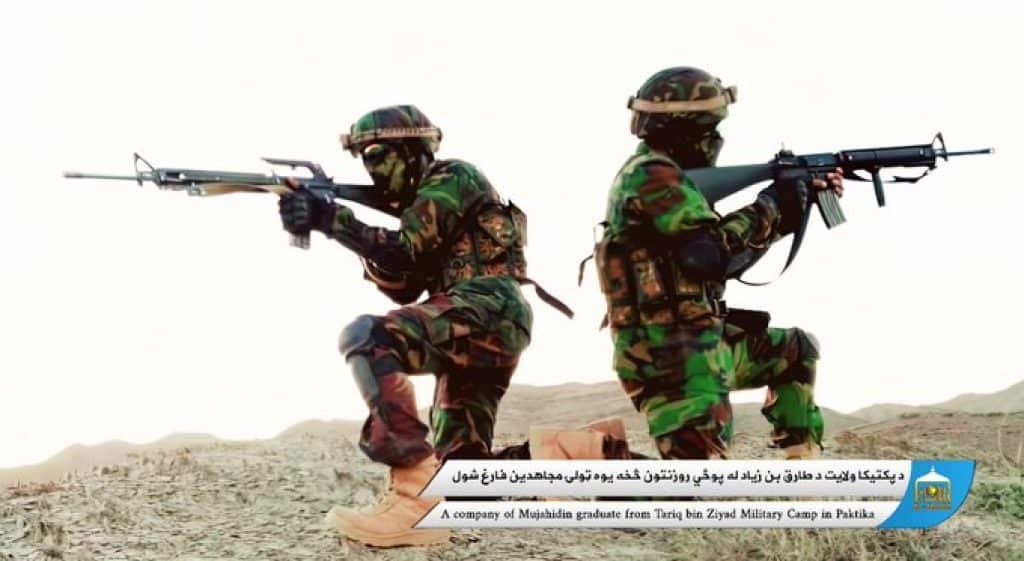
The Taliban has “maintained close ties with al Qaeda” and is “very likely preparing for large-scale offensives against population centers and Afghan government installations,” according to the Defense Intelligence Agency (DIA). The DIA’s analysis is cited in a report prepared by the Department of Defense’s Lead Inspector General for Operation Freedom’s Sentinel in Afghanistan.
The inspector general’s report was released on May 18. That same day, Zalmay Khalilzad, the U.S. special representative for Afghanistan reconciliation, testified before the U.S. House of Representatives Committee on Foreign Affairs.
During his testimony, Khalilzad claimed that the Taliban has made “substantial progress” on its counterterrorism commitments, though he failed to provide a single example. Khalilzad’s claim is contradicted by the DIA’s assessment, as well as other official reporting since the U.S. State Department entered into its agreement with the Taliban on Feb. 29, 2020.
Khalilzad was questioned by Congressman Gregory Meeks, a Democrat from New York who chairs the House Foreign Affairs Committee.
“There is a question of whether or not you were able to negotiate a commitment from the Taliban to separate from al Qaeda,” Rep. Meeks said. “Did you negotiate that or not?”
In response, Khalilzad simply summarized his terse three-plus page agreement with the Taliban. “Our agreement specifies that the Taliban will not host, will not allow training, will not allow fundraising, will not allow recruitment of terrorists, including al Qaeda, that would threaten the security of the United States and our allies,” Khalilzad said.
Rep. Meeks then pressed Khalilzad on this point, asking: “So, of those commitments, what would you say the Taliban has done, or demonstrated that it is upholding them, or not?”
“Mr. Chairman, what I can say in this setting is that they have made substantial progress in delivering on those commitments, but we would like to see more,” Khalilzad responded.
By claiming that was all he could say “in this setting,” Khalilzad implied that there is some secret intelligence showing how the Taliban has been secretly complying with its supposed counterterrorism assurances. There is no hint that this is the case in any publicly-available reporting, and al Qaeda has celebrated Khalilzad’s deal with the Taliban as a “victory” for the mujahideen.
Contrary to Khalilzad’s assurances, the DIA assesses that the Taliban and al Qaeda “have reinforced ties over the past decades, likely making it difficult for an organizational split to occur.” The DIA reported that al Qaeda “is likely awaiting further guidance from the Taliban.” The two continue to fight side by side against their common foes inside Afghanistan, despite some erroneous reports suggesting that the Taliban was going to disband foreign fighter units.
While the DIA’s reporting is inconsistent with Khalilzad’s assurances, it is in line with other official assessments.
In May 2020, the Lead Inspector General for Operation Freedom’s Sentinel reported that the Taliban’s leadership was “reluctant to publicly break with al Qaeda.”
In a May 27, 2020, analysis, a monitoring team working for the United Nations Security Council reported that the Taliban “regularly consulted with al Qaeda during negotiations with the United States and offered guarantees that it would honor their historical ties.” That same U.N. report cited multiple points of contact between senior al Qaeda and Taliban leaders, as well as other details concerning how the two organizations are intertwined.
In Jan., the U.S. Treasury Department reported that al Qaeda was “gaining strength in Afghanistan while continuing to operate with the Taliban under the Taliban’s protection.” Al Qaeda “capitalizes on its relationship with the Taliban through its network of mentors and advisers who are embedded with the Taliban, providing advice, guidance, and financial support.”
Treasury said that al Qaeda “maintains close contacts with the Taliban.” And this remained true as of May 2020 — that is, a few months after the Feb. 29 agreement between the U.S. and Taliban in Doha — as al Qaeda and the Taliban “maintained a strong relationship and continued to meet regularly.”
Treasury also referenced intelligence showing that senior Haqqani Network officials “have discussed forming a new joint unit of armed fighters in cooperation with and funded by al Qaeda.” The Haqqani Network, led by Sirajuddin Haqqani, is an integral part of the Taliban and also closely allied with al Qaeda. Sirajuddin is the Taliban’s deputy emir.
The Taliban has refused to admit that al Qaeda operates inside Afghanistan, let alone break with the group. The Taliban regularly lies about the presence of al Qaeda and affiliated jihadists.
On the other hand, Thabat News Agency, which likely serves as an al Qaeda media arm, regularly claims operations inside Afghanistan. The claims are included in Thabat’s weekly newsletter. In addition, U.S. and Afghan forces have repeatedly targeted al Qaeda figures and fighters in the Taliban’s territory since Feb. 29, 2020. There are also multiple reports indicating that al Qaeda and al Qaeda-affiliated groups continue to assist the Taliban in its insurgency.
Against all of this evidence, Khalilzad has yet to produce a single example of the Taliban’s compliance with the counterterrorism assurances he negotiated.







